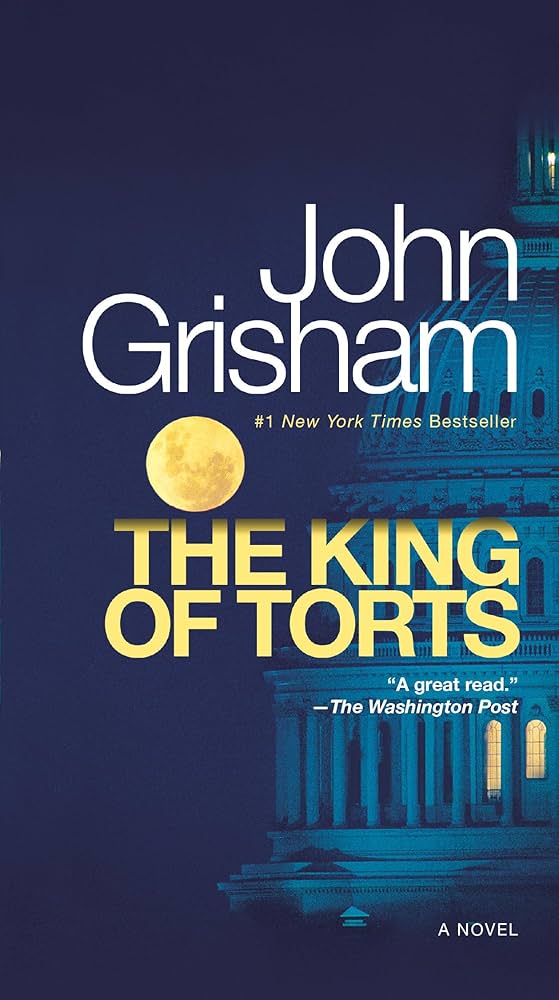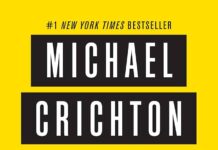In the realm of legal thrillers, John Grisham has long held the mantle of master storyteller, weaving intricate plots that delve into the complexities of law and morality. The King of Torts stands as a compelling entry in his oeuvre,inviting readers to explore the often murky intersection of justice,ambition,and ethical compromise. embarks on a meticulous journey thru these themes, offering a balanced viewpoint that neither lionizes nor condemns the novel’s portrayal of the American legal system. This review opens the door to a deeper understanding of Grisham’s narrative craft and the provocative questions his work raises about the nature of justice itself.
Exploring the Intricate Plot Twists and Legal Drama That Drive the Narrative of The King of Torts
Central to the story’s momentum is a cast of characters whose motivations are as intricate as the cases they battle. The legal strategies, courtroom showdowns, and behind-the-scenes negotiations combine to form a riveting cocktail of suspense and moral ambiguity. Below is a snapshot of key elements that fuel the tension throughout the book:
- Ethical dilemmas: Balancing personal gain against professional responsibility
- Unexpected alliances: Shifting loyalties that reshape the battlefield
- High-stakes litigation: Complex cases that push legal boundaries
| Plot Element | Impact on Story |
|---|---|
| Class Action Lawsuit | Drives the protagonist’s rise and ethical challenges |
| Betrayal & Consequences | Tests relationships and highlights personal struggles |
| courtroom Drama | creates suspense and showcases strategic brilliance |
An In-Depth Analysis of Character Development and Moral Ambiguities in John Grisham’s Legal Thriller
Throughout the novel, Grisham employs a nuanced approach to his cast, particularly highlighting the tension between ambition and ethics. Consider the following traits that define Clay’s complex persona:
- Empathy: Initially rooted in defending the underdog, his compassion wanes as financial success takes precedence.
- Cunning: He shifts from a straightforward advocate to a mastermind navigating the undercurrents of litigation.
- Vulnerability: Despite his exterior, Clay’s moments of doubt reveal a man wrestling with the consequences of his choices.
| Character Aspect | Initial Traits | Traits Post-Transformation |
|---|---|---|
| ethical Compass | Clear and steadfast | Flexible and pragmatic |
| Legal Strategy | Defensive and rule-bound | Aggressive and exploitative |
| Personal Motivation | Justice for clients | Personal enrichment |
the Realism Behind the Courtroom Scenes and How They Reflect Contemporary Legal Practices
John Grisham’s courtroom portrayals in The King of Torts go beyond mere dramatization,offering a surprisingly nuanced reflection of modern legal dynamics. His depiction of high-stakes litigation captures the intentional pacing of trial preparation, the intricate dance between defense and prosecution, and the often mercurial nature of jury sentiment. The novel’s focus on malpractice, class-action suits, and the growing influence of corporate interests echoes real-world preoccupations, demonstrating how legal outcomes often hinge on factors far beyond the written law itself. This narrative depth invites readers to consider the balance between justice as an ideal and the practical challenges lawyers face daily.
- Pre-trial negotiations: Grisham showcases the vital role of settlement discussions, highlighting how many cases resolve outside the courtroom spotlight.
- Client-lawyer dynamics: Complex relationships emphasize trust,ethical dilemmas,and personal ambition that shape legal decisions.
- Ethics vs. strategy: The tension between doing what’s right and what is legally favorable reflects real moral quandaries in law practice.
| Aspect | Representation in the Novel | contemporary Reality |
|---|---|---|
| Jury Influence | Frequently enough unpredictable and swayed by emotion | Key factor with varying outcomes based on presentation |
| legal Strategy | Combination of law and psychological tactics | Critical for triumphant case management and client satisfaction |
| Settlement Frequency | Many cases settled before trial | Majority of cases resolved through settlements |
Moreover, Grisham’s portrayal reflects the increasing specialization within legal practice, where trial lawyers often become experts in very narrow fields such as environmental law, medical malpractice, or intellectual property. This trend, mirrored in the novel, challenges the archetype of the generalist lawyer and showcases how contemporary legal battles are waged not just with law books but with expert witnesses, forensic technology, and meticulous paperwork. The intricate courtroom dialogues and procedural accuracy serve not only to educate but to subtly critique the legal system’s procedural complexity and its impact on delivering swift justice.
Unpacking Themes of Justice, power, and Corruption in The King of Torts with Detailed Examples
John grisham masterfully dissects the intricate dance between justice, power, and corruption through his protagonist, Clay Carter, whose transformation from a small-time public defender to a self-serving tort lawyer exposes the fragile balance within the legal system. At its core, the novel illustrates how the quest for justice often collides headfirst with the intoxication of power. Clay’s initial desire to help the underdog gradually warps into a relentless drive for wealth and influence, highlighting how even the most well-intentioned players can become entangled in a web of moral compromise. This tension is revealed vividly in moments where Clay must decide between upholding the truth or exploiting legal loopholes to win cases, underscoring the novel’s meditation on ethical boundaries in law practice.
Corruption, in Grisham’s narrative, is not merely the act of overt wrongdoing but frequently enough a subtle erosion of principles disguised as pragmatic survival. The novel presents a nuanced spectrum of characters-from the influential lobbyists manipulating legislation behind closed doors to desperate clients navigating a system stacked against them. A prime example lies in the interactions between Clay and his wealthy clients, where the promise of justice is frequently enough sacrificed for lucrative payouts. The table below breaks down key players and their relationship to the themes, emphasizing how interconnected and complex these forces truly are:
| Character | Role | Relationship to Justice | Connection to Power/Corruption |
|---|---|---|---|
| Clay Carter | Protagonist Lawyer | Starts as idealistic defender, later seeks fame and fortune | Becomes susceptible to manipulation by powerful interests |
| Janelle Carter | Clay’s Wife | Represents moral conscience | Struggles with Clay’s shifting ethics |
| Lobbyists | Political Influencers | Obstruct genuine justice reforms | Drive systemic corruption through legislation |
| Injured Clients | Victims | Seek rightful compensation | Often exploited for settlement money |
How Grisham Balances Suspense and Ethical Questions to Engage Readers Throughout the Story
John Grisham masterfully crafts a narrative that sustains tension by weaving in timely ethical dilemmas, compelling readers to both anticipate the next twist and reflect on deeper moral issues. Rather of relying solely on fast-paced action or cliffhangers, Grisham introduces complex legal battles that expose the darker underbelly of the justice system. this dual approach keeps audiences hooked as they question not just what will happen next, but also what should happen. Through vivid character development and relentless plot progression, the story becomes a playground for themes of greed, integrity, and the often blurry line between right and wrong.
Within this framework, Grisham presents his ethical inquiries with subtlety-never preaching but encouraging introspection. Key moments in the story highlight:
- The exploitation of the vulnerable in the pursuit of justice
- The personal cost for those who fight systemic corruption
- The consequences of ambition clouding one’s moral compass
By balancing these weighty questions alongside suspenseful courtroom drama, Grisham ensures that readers remain engaged not only on an emotional level but also intellectually.The story acts as a catalyst for pondering broader social justice issues, making the reading experience resonate long after the final page.
| Suspense Elements | ethical Themes |
|---|---|
| High-stakes lawsuits | Justice vs. profit |
| Unforeseen plot twists | Moral ambiguity of characters |
| Race against time scenarios | Impact on victims’ lives |
A Closer Look at the Writing Style and Narrative Techniques That Make The King of Torts compelling
Grisham’s prose in The King of Torts is marked by a clarity and pace that masterfully balance legal complexity with reader accessibility.His sentences flow with a conversational rhythm that invites engagement, making intricate courtroom tactics and ethical quandaries digestible without oversimplification.The narrative is peppered with vivid descriptions and sharp dialogues, which not only advance the plot but also deepen character development. Through this style, Grisham ensures that legal drama feels as much about human ambition and moral dilemmas as it is indeed about law itself.
The novel’s storytelling techniques further enhance its appeal by employing:
- Multiple perspectives: Shifting viewpoints allow readers to see the unfolding legal battle from different angles – the lawyer, the clients, and the opposition – adding layers of complexity.
- Strategic pacing: The author mixes high-tension courtroom scenes with quieter, introspective moments, providing a rhythm that sustains suspense.
- Symbolism and motifs: Recurring themes such as justice, greed, and redemption serve as undercurrents that resonate throughout the narrative.
| Technique | Effect on Reader |
|---|---|
| First-person narration | Creates intimacy and immediacy |
| Legal jargon with layman explanations | Keeps technical accuracy while ensuring clarity |
| Cliffhanger chapter endings | Encourages continuous reading and builds anticipation |
| Character-driven plot twists | Enhances emotional investment |
Comparing the King of Torts to Other Legal Novels: What Sets It Apart in the Genre
Consider the following elements that highlight the novel’s unique place among its peers:
- Focus on Civil Litigation: Shifts from criminal law to the often-overlooked battlefield of tort law.
- Ethical Ambiguity: Explores the fine line between right and wrong within legal practices.
- Character-Centric Narrative: Goes beyond case files to show personal growth and inner conflict.
- Social Commentary: Reflects on the impact of legal decisions on real peopel and society.
| Aspect | The King of Torts | Typical Legal Novels |
|---|---|---|
| Legal Focus | Civil tort law | Criminal law and trials |
| Tone | Thought-provoking, morally complex | Suspenseful, often black-and-white morality |
| Character emphasis | Personal dilemmas and transformation | Primarily plot-driven |
| social Impact | Critique of legal system and society | Entertainment-focused |
Recommendations for Readers Interested in Legal Drama and Complex Ethical Dilemmas
for those drawn to narratives where legal intricacies meet profound moral puzzles, The King of Torts offers a fertile ground.Readers who appreciate seeing the human side behind courtroom battles will find themselves captivated by the nuanced portrayal of ambition, justice, and ethical conflict. This novel invites contemplation of the frequently enough-blurred boundaries between right and wrong, highlighting how ambition can both illuminate and cloud judgment in the quest for justice.
To further enrich your exploration of these themes, consider diving into works and shows that weave intricate legal challenges with layered ethical questions. Here are some gripping recommendations to fuel your captivation:
- “A Time to Kill” by John Grisham – Explores racial tensions and moral responsibility in a small Southern town’s justice system.
- “The Good Wife” (TV series) – Delves into political scandals and the grey areas of legal practice.
- “Anatomy of a Murder” by Robert Traver – A masterclass in courtroom strategy and ethical ambiguity.
- “The Lincoln Lawyer” by Michael Connelly - Follows a defense attorney navigating complex client morality.
| Title | Core Ethical Dilemma | Why It Resonates |
|---|---|---|
| A Time to Kill | Vigilante justice vs. law | Challenges readers to question the nature of justice. |
| The Good Wife | Balancing public image and truth | Shows the complexity of ethics in political and legal spheres. |
| Anatomy of a Murder | Truth vs. legal strategy | Explores the tension between law and morality in the courtroom. |
Highlighting Memorable Dialogues and Scenes That Capture the Heart of Legal battles
John Grisham masterfully weaves dialog that not only drives the plot but also dives deep into the moral complexities of litigation. Moments where protagonist Clay Carter confronts ethical dilemmas shine through with authenticity, showcasing the nuanced tug-of-war between ambition and conscience. For instance, Clay’s confrontation with his mentor, where ideals clash and motives blur, is a standout scene that crystallizes the tension between winning a case and maintaining integrity. These exchanges resonate because they reflect real-world legal battles, making readers question what true justice entails.
The novel also boasts a series of unforgettable scenes that thrust readers into the high-stakes courtroom drama. From the electrifying cross-examinations to raw behind-the-scenes negotiations, the narrative pulses with life. Consider the gripping scene where Clay uncovers critical evidence in a smoky bar, a turning point that blends suspense with legal strategy. Below is a quick look at some key scenes and their thematic meaning:
| Scene | Emotional Impact | Legal Theme |
|---|---|---|
| Clay’s mentor confrontation | Intense moral conflict | Ethics in legal practice |
| Discovery in the bar | Suspense and revelation | Evidence gathering |
| Final courtroom showdown | Climax of justice | Truth vs. strategy |
The Role of Secondary characters and Their Impact on the Overall Story Arc
In John Grisham’s the King of Torts, secondary characters serve as more than mere narrative accessories; they are crucial architects of the plot’s complexity and emotional depth. Characters such as Ray Matthews, the charming yet morally ambiguous mentor, and Melissa, the tenacious investigator, do not just populate the story world-they challenge the protagonist’s convictions and catalyze pivotal decisions. Their presence adds nuanced layers to the legal battles and sharpens the moral dilemmas faced by Clay Carter. Through their interactions, readers witness a spectrum of motivations and ethical boundaries, making the unfolding legal thriller not just a fight for justice but a deep exploration of human character.
The impact of these supporting players extends well beyond individual scenes, weaving a rich tapestry that enhances the novel’s overarching themes. Consider the table below, which highlights key secondary characters, their roles, and the narrative functions they fulfill:
| Character | Role | Impact on Story |
|---|---|---|
| ray matthews | Mentor | challenges protagonist’s ethics, introduces legal risks |
| Melissa | Investigator | Uncovers hidden truths, drives plot forward |
| Larry | adversary Lawyer | Creates conflict, tests protagonist’s resolve |
| Claire | Client | Personalizes legal battles, adds emotional stakes |
These secondary characters function as pivotal narrative devices.Their interactions with Clay not only expose different facets of the legal system but also reflect broader societal implications embedded within the storyline. Through their complex relationships, Grisham expertly balances courtroom drama with character-driven tension, ensuring the story’s momentum is sustained and its message resonates beyond the final page.
Assessing the Book’s Pace and Tension in Building a Captivating legal Thriller Experience
John Grisham masterfully orchestrates a relentless momentum throughout The King of Torts, skillfully balancing swift progression with moments of strategic pause. The narrative unfolds with a compelling rhythm that steadily escalates tension, avoiding the common pitfalls of rushed storytelling or stagnation. Each chapter subtly intensifies the stakes, prompting readers to invest emotionally while simultaneously urging them forward. grisham’s pacing is not merely about quick transitions but about the intricate layering of suspense, where the legal intricacies and moral quandaries collide to heighten anticipation. This dynamic cadence keeps the audience riveted, ensuring that the buildup to each courtroom showdown feels both earned and exhilarating.
Several key elements contribute substantially to the novel’s captivating tension:
- Claustrophobic legal battles: Scenes in the courtroom and negotiation rooms shrink the space, building a palpable pressure that mirrors real-world legal intensity.
- Character-driven stakes: The personal ambitions and ethical dilemmas of the protagonist and antagonists deepen the suspense beyond mere plot mechanics.
- Unpredictable twists: Grisham sprinkles unexpected revelations at critical junctures, disorienting readers just enough to keep the conclusion uncertain.
| Pace Element | Effect on Tension | Example |
|---|---|---|
| Sudden revelations | Shock value, shifts expectations | Unexpected witness testimony |
| Slow-building moral conflict | Deepens reader investment | Protagonist’s ethical dilemma |
| Rapid-fire legal exchanges | Creates urgency and intensity | Negotiation scenes |
The use of Setting and Atmosphere to Enhance the Emotional Weight of Legal Conflicts
John Grisham masterfully situates his legal drama within environments that mirror the emotional stakes of the story, crafting an atmosphere pulsating with tension and moral complexity. From the sterile, intimidating courtrooms to the bustling yet often cold law offices, the settings breathe life into the conflicts, amplifying the protagonist’s internal struggles. The contrast between these spaces-one emblematic of rigid authority, the other representative of cutthroat ambition-functions as a silent narrator, guiding readers through the psychological labyrinth of justice and power.
Beyond mere backdrop, these atmospheres envelop the reader in the ethical haze that clouds the characters’ decisions. The oppressive weight of the legal system is palpable in scenes where the flicker of fluorescent lights casts harsh shadows, symbolizing the blurred lines between right and wrong. grisham’s use of setting conjures a mood where every choice feels consequential, every negotiation a high-stakes gamble, beautifully underscored by a subtle play of light, space, and silence.
- Courtroom: Claustrophobic and controlled,heightening tension.
- Law Firm: Gleaming yet cold, reflecting ambition and moral ambiguity.
- City Streets: Chaotic, mirroring the unpredictability of justice.
| Location | Emotional Tone | Narrative Role |
|---|---|---|
| Courtroom | Tense, oppressive | Pressure cooker for truth |
| Law Office | Calculating, cold | Ambition and moral conflict |
| city Streets | Uncertain, chaotic | Reflection of unpredictability |
John Grisham and His Influence on Contemporary Legal Fiction: A Brief Author Profile
offers more than just a critique-it invites readers to peel back the layers of legal intrigue and moral complexity set forth by grisham.Whether you find yourself captivated by the courtroom dramas or reflective on the ethical questions raised, this review illuminates the multifaceted nature of a story where justice is as tangled as the torts it portrays. For anyone willing to ponder the gray areas of the law, the exploration here serves as a fitting passage between Grisham’s narrative and the deeper conversations it inspires.








